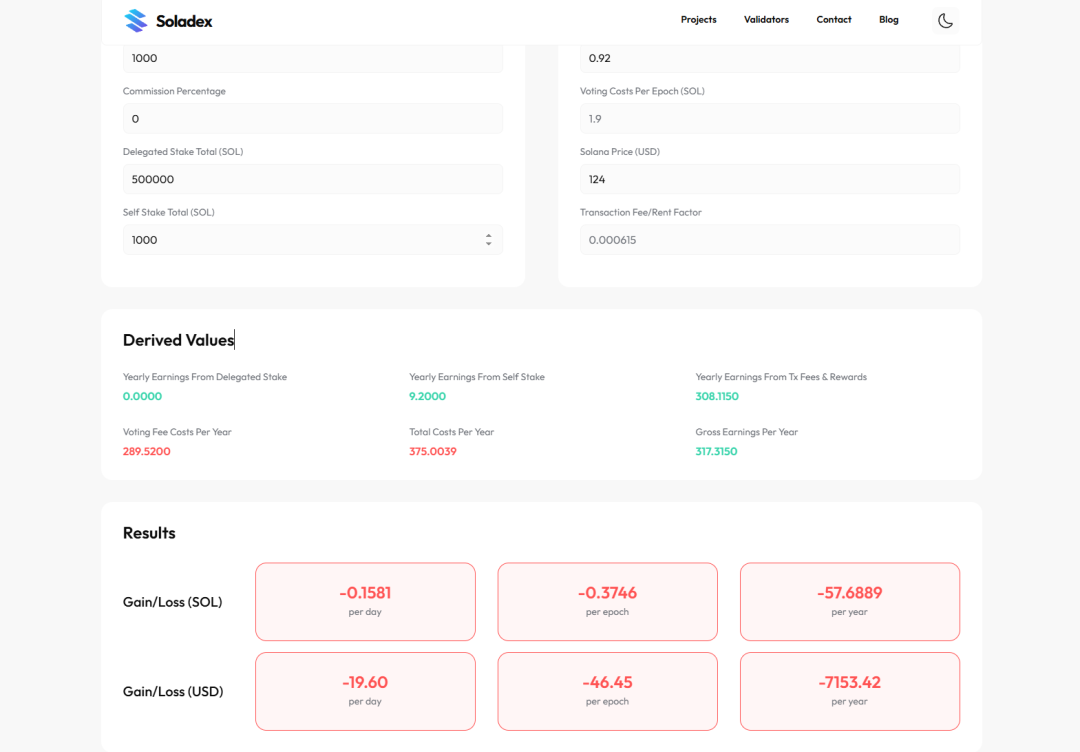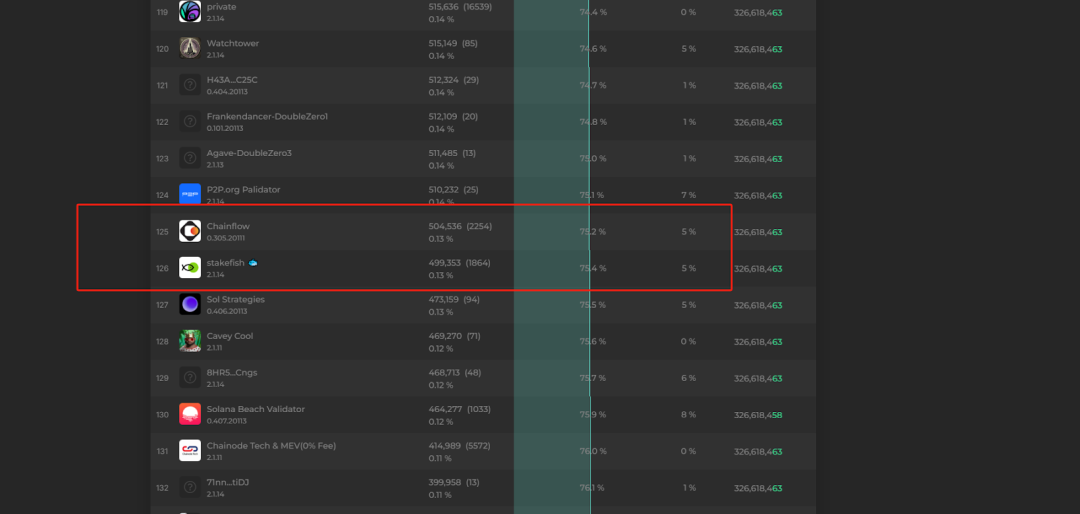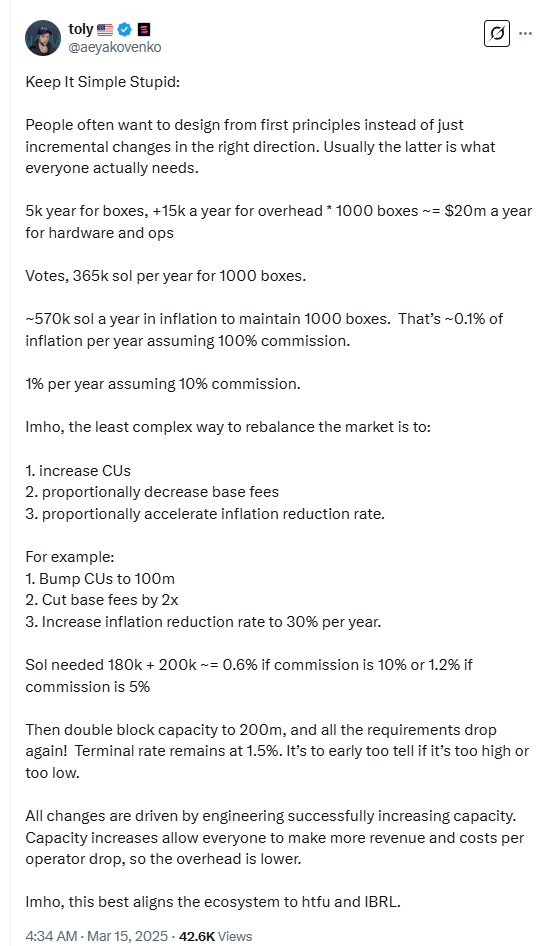
The most controversial proposal in Solana’s governance history, SIMD-0228, ultimately failed with less than 66.6% of votes in favor. This vote was not only a technical debate on inflation reform but also evolved into a battle of interests among validators.
Leading players attempted to push for ecological efficiency upgrades, while smaller validators fiercely resisted for their survival rights. When the “democratic facade” of on-chain governance was torn apart by data, Solana revealed not only the inflation problem but also the real rift in interests between large and small validators. How will this storm reshape the future of the ecosystem? The answer may lie in the interplay between code and the ballot box.
The Battle of Interests Between Large and Small Validators Led to the Proposal’s Failure
The main content of the SIMD-0228 proposal was to dynamically adjust the inflation rate to enhance the network’s staking rate. Previously, PANew provided a detailed interpretation of the proposal’s content (Related reading: Solana’s Inflation Revolution: The SIMD-0228 Proposal Sparks Community Controversy, the Hidden “Death Spiral” Risk Behind the 80% Issuance Reduction).
In general, if the proposal passed, it would likely result in a reduction of Solana’s block rewards. When the proposer suggested this idea, they believed it would not significantly impact validators’ income. Their reasoning was based on the substantial increase in MEV income for validators in Q4 2024, suggesting that even with reduced inflation and block rewards, the overall income level for validators would not be affected.
However, in fact, data from February 2025 showed that MEV income on the Solana chain had significantly shrunk. Compared to a total income of $550 million in January, it dropped to $195 million in February, a monthly decline of 64%. The income for March is expected to be even lower than that of February.

Thus, the premise of the 0228 proposal no longer exists, and the most affected are the smaller nodes.
Therefore, in this vote, a clear polarization of attitudes was evident. The voting results showed that 67.5% of small nodes with a staking amount of less than 100,000 SOL voted against the proposal, while over 60% of medium-sized nodes with less than 500,000 SOL also voted against it. In contrast, 51.6% of validators with a staking amount between 500,000 and 1,000,000 SOL voted in favor, and 65.8% of nodes with over 1,000,000 SOL supported it.
It can be said that the failure of the SIMD-0228 proposal was essentially a battle of interests between large and small validators within the Solana network.
The Survival Dilemma of Small Validators: Sharp Decline in MEV Income Affects 90% of Validators
The core reason for this is the different business models of large and small validators.
Large validators operate on the logic of increasing their share of leading blocks to provide better on-chain services to clients. Therefore, it is evident that the top-ranked large validators extract less MEV commission, with many charging zero. These validator operators are either centralized exchanges or service providers like Helius that offer RPC services.
Small validators, on the other hand, rely more on block rewards and MEV income. Most small validators’ reasonable income sources primarily depend on block rewards and MEV income. Once this income sharply declines, they either have to choose to exit the validator ranks or resort to running sandwich attack bots to increase gray income.
Before analyzing the specific impact of the proposal on small validators, it is necessary to clarify their cost structure.
For the smallest unit of validators, the current recommended equipment for running a validator requires several important configurations: 512GB of memory and 10GB of bandwidth. These two items are the most costly parts, with a server configured this way costing at least about $800 per month. Additionally, a minimum of 1,000 SOL in staking equity is required. The total investment amounts to approximately $134,000. If block rewards drop to 0.92% (the expected inflation rate of the proposal), the daily net loss would reach $19.6, while also bearing the risk of value loss from the decline of SOL tokens.

According to the current distribution of validator nodes, over 90% of validators have less than 500,000 SOL. To gain more staking volume, these validators typically adopt a low commission rate of 0-5%, meaning they charge very little staking commission from the delegators supporting the validation, with most of their income coming from self-staking.

Looking at the distribution of priority fees, there are currently 1,333 validators, with the top 125 large validators occupying 75% of the share. The remaining 1,208 small validators share about 25% of the market. Based on the total on-chain fees of $195 million in February, these 1,208 validators could collectively earn $48.75 million, averaging about $40,000 in income per small validator.

Taking the median node (729th) as an example, this node’s self-staking amount allows it to earn $3.67 per day, but if the inflation rate drops to 0.92%, this node could potentially lose $17 per day.
Solana Co-Founder Proposes New Plan to Reduce Inflation
In fact, another proposal, SIMD-0123, was concurrently proposed alongside 0228. Similar to 0228, this proposal was also designed to limit validators’ income. It aims to automatically distribute rewards that validators promise to delegators at the end of each cycle through a protocol upgrade. Under the current mechanism, validators issue NFTs or LSTs (liquid staking tokens) as settlement vouchers, but this settlement method is neither public nor accurate. Previously, some validators had adjusted commission rates privately to reduce returns to delegators.
However, this proposal did not spark as much discussion as 0228 and ultimately passed with a support rate of 74.91%. Solana co-founder Toly commented on X, saying, “Simd 228 did not pass, but 123 did. Although both proposals aimed to reduce validators’ income, the opposition to 228 was not solely for their own interests.”
Nevertheless, the failure of the 0228 proposal does not mean a halt to Solana’s inflation reform plans. After the voting concluded, Toly proposed another more moderate plan on X, which involves increasing the block CU (computational units) to double the network’s throughput and accelerate the annual deflation rate reduction to 30%.

Overall, Toly advocates for reducing the reliance on inflation by optimizing engineering for expansion, thereby lowering the cost of each transaction while improving network efficiency, gradually achieving a sustainable model of “high throughput, low inflation.” This plan avoids the complex governance battles of SIMD-0228 and relies more on the natural evolution of technological upgrades.
However, this proposal has not yet been formally presented on the developer forum; it is merely a suggestion. Regardless, the inflation issue of SOL seems to be one of the key problems that the Solana ecosystem must address moving forward.
The failure of the SIMD-0228 proposal reflects the complex interest structure within the Solana ecosystem and the urgent need to optimize the governance model. Although this proposal ultimately failed, it may represent a successful collective participation in Solana’s governance journey. Moving forward, how to balance the interests of all parties while optimizing the token inflation model, ensuring the ecosystem has a unified goal to continue progressing, may be the most challenging problem in Solana’s governance.
AddVX (🆔: yuanqukuai)

Disclaimer:
This platform maintains neutrality regarding the content, statements, and opinions shared or reprinted, and does not provide any express or implied guarantees regarding the accuracy, reliability, or completeness of the content. It is for reference only, and this public platform will not bear any responsibility.
The final interpretation of the above statement belongs to this public platform, and this statement will apply to all time-sharing and reprinted articles on this platform. Thank you for your cooperation.
Recommended Reading
-
Discussion on the Value of Telegram Mini-Games: CATI and HMSTR Token Economics and Price Performance
-
Solana Launches “Number One Player”; What Happened in GameFi Last Week?
-
Interview with Puffpaw Founder Reffo: Smoking “Mining” is Cool, but How to Implement It?
-
Is SOL’s “Emperor’s New Clothes” a Reality? Are Many People Really Making Big Money on Solana?
-
DeSci Leaders Also Get Involved; Can Pump.science Play Well with “Biological Science Meme”? | Web3 Daily Scam
-
What Key Application Scenarios and Participation Opportunities Were Shared at PayFi, the Highlight of Solana Breakpoint?
-
Vitalik’s New Article: It’s Time for the Entire Ethereum Ecosystem to “Align”.
-
MOODENG, the Meme Coin of Internet Celebrity Hippo, Soars Over Ten Thousand Times, Reviving the Zoo Market Trend.
-
TikTok Celebrity Animals Become a New Meme Concept; Projects with Hundredfold Returns Emerge Overnight.
-
The Largest Airdrop in History: Users Average Only $3; Who is Winning in the Hamster Kombat Game?
-
CZ Released Early Today; Where Will He Go Next?
-
“Flappy Bird” Returns to the Ton Ecosystem After Ten Years; Can It Recreate the Former Dark Horse Legend?
